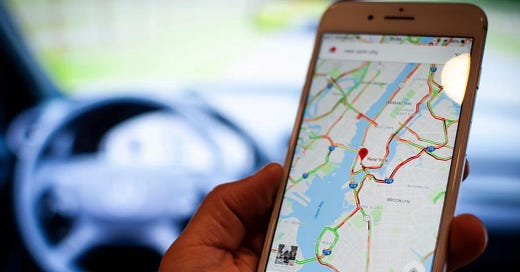Boosting User Engagement with Location-Based Services in React Native
Explore Geofencing, Background Location Tracking, and iBeacons to Send Targeted Notifications of Offers to Your Users
Are you developing a mobile application that sends notifications of offers to users? Do you want a way to find out if a user is in the vicinity of an area even if they are not using the application at the moment? Location-based services can help you achieve this functionality in your React Native application.
In this post, we'll explore three different techniques for implementing location-based services in your application: geofencing, background location tracking, and iBeacons. We'll provide real examples and code snippets to help you get started.
Geofencing
Geofencing is a technique that allows you to define a virtual boundary around a physical location. You can set up geofences around the areas where you want to send notifications of offers. When a user enters or exits the geofenced area, your application will receive a notification. You can use this notification to trigger a push notification to the user.
Here's an example of how to implement geofencing in your React Native application using the react-native-geolocation-service library:
import Geolocation from 'react-native-geolocation-service';
Geolocation.watchPosition(
(position) => {
console.log(position);
// Check if the user is inside the geofenced area
// Send a notification to the user if they are inside the geofenced area
},
(error) => {
console.log(error);
},
{
enableHighAccuracy: true,
distanceFilter: 100,
geofenceInterval: 1000,
},
);In this example, we're using the watchPosition method from the react-native-geolocation-service library to track the user's location. We're checking if the user is inside the geofenced area and sending a notification to the user if they are inside the geofenced area.
Background Location Tracking
You can track the user's location in the background using the device's GPS. This will allow you to determine if the user is in the vicinity of a particular area. You can then use this information to send notifications to the user.
Here's an example of how to implement background location tracking in your React Native application using the react-native-background-geolocation library:
import BackgroundGeolocation from 'react-native-background-geolocation';
BackgroundGeolocation.configure({
desiredAccuracy: BackgroundGeolocation.HIGH_ACCURACY,
stationaryRadius: 50,
distanceFilter: 50,
notificationTitle: 'Background tracking',
notificationText: 'enabled',
startOnBoot: false,
stopOnTerminate: true,
locationProvider: BackgroundGeolocation.ACTIVITY_PROVIDER,
interval: 10000,
fastestInterval: 5000,
activitiesInterval: 10000,
stopOnStillActivity: false,
});
BackgroundGeolocation.on('location', (location) => {
console.log(location);
// Check if the user is in the vicinity of a particular area
// Send a notification to the user if they are in the vicinity of a particular area
});
BackgroundGeolocation.start();In this example, we're using the configure method from the react-native-background-geolocation library to set up the background location tracking. We're checking if the user is in the vicinity of a particular area and sending a notification to the user if they are in the vicinity of a particular area.
iBeacons
iBeacons are small Bluetooth devices that transmit a signal that can be detected by mobile devices. You can place iBeacons around the areas where you want to send notifications of offers. When a user enters the range of an iBeacon, your application will receive a notification. You can use this notification to trigger a push notification to the user.
Here's an example of how to implement iBeacons in your React Native application using the react-native-beacons-manager library:
import Beacons from 'react-native-beacons-manager';
Beacons.detectIBeacons();
Beacons.startMonitoringForRegion({
identifier: 'My Beacon',
uuid: 'B9407F30-F5F8-466E-AFF9-25556B57FE6D',
minor: 1000,
major: 5,
});
Beacons.startRangingBeaconsInRegion({
identifier: 'My Beacon',
uuid: 'B9407F30-F5F8-466E-AFF9-25556B57FE6D',
minor: 1000,
major: 5,
});
Beacons
.regionDidEnter(region)
.subscribe(() => {
console.log('Beacon entered:', region);
// Send a notification to the user when they enter the range of the iBeacon
});
Beacons
.regionDidExit(region)
.subscribe(() => {
console.log('Beacon exited:', region);
});In this example, we're using the react-native-beacons-manager library to detect and monitor iBeacons. We're sending a notification to the user when they enter the range of the iBeacon.
Conclusion
Location-based services can be a powerful tool for sending notifications of offers to users in your React Native application. In this post, we've explored three different techniques for implementing location-based services: geofencing, background location tracking, and iBeacons. Each of these techniques has its own advantages and disadvantages, and the choice of technique will depend on the specific requirements of your application.
We hope this post has been helpful in getting you started with location-based services in your React Native application. If you have any questions or feedback, please let us know in the comments below. Happy coding!




